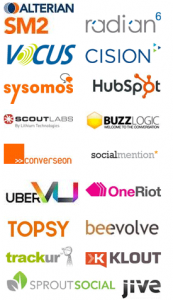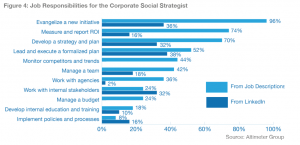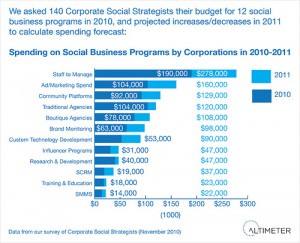 Social media monitoring tools are essential for companies trying to gauge online conversations pertaining to their brand(s). There are numerous platforms to choose from; with almost 200 in the market place, it’s getting difficult to select the right one.
Social media monitoring tools are essential for companies trying to gauge online conversations pertaining to their brand(s). There are numerous platforms to choose from; with almost 200 in the market place, it’s getting difficult to select the right one.
Below are some things to consider when choosing your platform along with a list of the most-used platforms out there.
Cost
Understandably, price is usually one of the top concerns, but be sure you’re getting all that you can out of the platform. Missing important conversations because your monitoring tool doesn’t pick up a specific channel can mean lost opportunities. It doesn’t bode well to be penny wise and a pound foolish with these tools.
Range of Coverage
All platforms cover the large social channels (i.e. Facebook, Twitter, YouTube and LinkedIn) but not all cover bookmarking sites like Digg and Reddit or specific forums and chat rooms. Be sure to find out all sites covered in a platform. Here’s a list of the most important social sites out there today.
Workflow Capabilities
If you have a multitude of departments needing to monitor and engage, you better figure out how you’re going to manage all these people and sites. Marketing needs to understand what customer service is doing along with HR, public relations, c-suite, sales, etc.
Integration with Other Applications
This is a big concern for companies with more complex social programs and highly matrixed structures. Be sure you know ahead of time what other applications you’ll be using before you select a monitoring tool.
Global Coverage
If you’re doing business on a global scale make sure you’re picking up conversations on such sites as Orkut, Renren, StudiVZ, Bebo and Kontakte, just to name a few. This capability isn’t cheep so don’t buy it if you don’t need it. Click here for a comprehensive list of global social networking websites.
Support and Training
Many of these tools are becoming quite sophisticated and are ever-changing to meet the newest platforms; thus, it’s important that the account team is keeping you up-to-speed on what is relevant to you.
Metrics and Reporting
You better be able to measure what you’re doing with social media or you’ll be out of a job fast. The big question always revolves around ROI so you better come prepared with numbers and killer graphs to impress the CEO.
Platforms
This certainly isn’t a comprehensive list but this should get you started in the right direction. For a comprehensive list with platform description, pricing and links check out Seamless Social’s list.
- Alterian
- Beevolve
- BuzzLogic
- Cision
- Converseion
- HubSpot
- Jive
- Klout
- Radian6
- ScoutLabs (Lithium)
- Social Mention
- SproutSocial
- Sysomos
- Topsy
- Trackur
- UberVU
- Vocus
For a quick comparison of some of these tools click here.
For those looking for lower cost solutions, check out “10 lower-priced monitoring services for nonprofits & organizations“









 Its amazing to see how social media has so quickly transformed the marketing world, not to mention the realm of advertising and public relations. We went from talking about how to build a Twitter account a few years ago to now expecting
Its amazing to see how social media has so quickly transformed the marketing world, not to mention the realm of advertising and public relations. We went from talking about how to build a Twitter account a few years ago to now expecting  LinkedIn and Microsoft’s Outlook have teamed up to provide a powerful tool to help users utilize the power of their connections through their e-mail. This tool is still in beta but can currently be downloaded quite easily. This new add-on capitalizes on
LinkedIn and Microsoft’s Outlook have teamed up to provide a powerful tool to help users utilize the power of their connections through their e-mail. This tool is still in beta but can currently be downloaded quite easily. This new add-on capitalizes on 